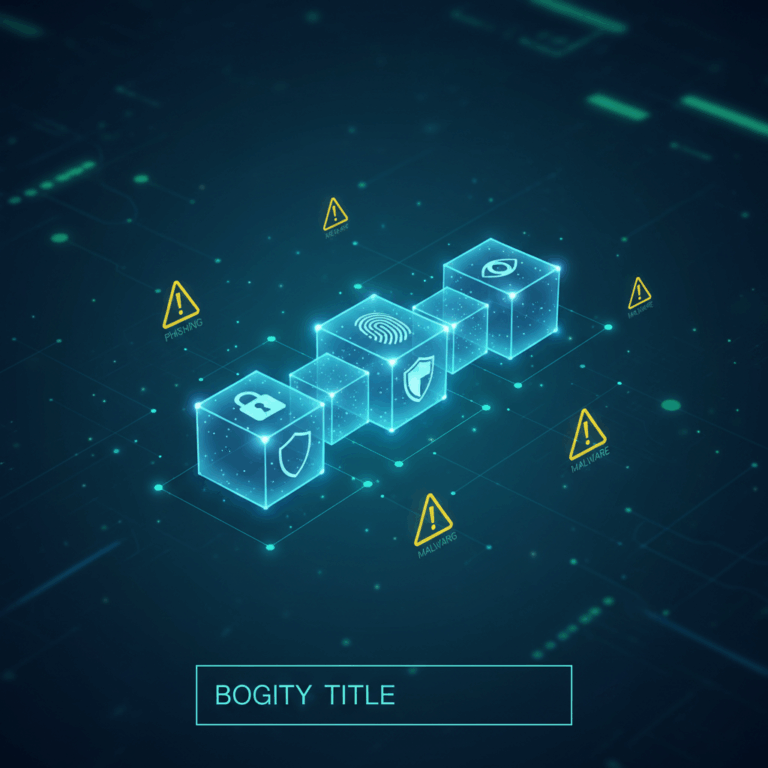Measures to protect the blockchain ecosystem
Blockchain security is essential for maintaining integrity and trust in decentralized networks. Implementing robust measures ensures protection against digital attacks and fraud.
These measures should combine advanced technology with good practices in key management, authentication and access control, as well as constant audits to identify vulnerabilities.
Furthermore, the infrastructure must be designed to withstand incidents and attacks, ensuring the continuity and security of operations on the blockchain network.
Secure key storage and authentication
Secure storage of private keys is essential for protecting digital assets. Solutions such as cold wallets, which keep keys offline, are recommended.
Additionally, the use of secure hardware devices and multi-factor authentication (2FA) significantly increases defense against unauthorized access.
Implementing least privilege schemes on platforms prevents users or processes from having more permissions than necessary, reducing the risk of internal exploitation.
Audits and protected network architecture
Regular smart contract audits allow for the detection of flaws and vulnerabilities before they are exploited by attackers, ensuring the robustness of the code.
Furthermore, a segmented and encrypted network architecture with geographically distributed nodes protects against distributed denial-of-service (DDoS) attacks and compromises system integrity less.
Continuous traffic monitoring and filtering mechanisms are essential to identify anomalous behavior and respond quickly to emerging threats.
Main risks in blockchain security
Blockchain security faces several risks that can compromise the integrity and trustworthiness of the network. Understanding these challenges is key to implementing effective protections.
Identifying and managing vulnerabilities is fundamental to avoiding economic losses and attacks that could undermine the operability of blockchain-based systems.
These risks impact both the underlying technology and the management of keys and operations, requiring constantly adapted and updated defense mechanisms.
Vulnerabilities in smart contracts
Smart contracts, although automated, contain code that can have logical flaws or programming errors. These can be exploited by attackers to steal funds.
Common errors include re-entries, uninitialized variables, and incorrect conditions, which have caused losses of millions of dollars on networks like Ethereum.
To mitigate these risks, formal audits and thorough testing are conducted before deployment, but continuous monitoring is vital to detect emerging vulnerabilities.
Selfish mining attacks and double-spending
In selfish mining attacks, a miner attempts to gain an advantage by creating private chains, delaying their release to the network and compromising their integrity.
This type of attack can cause doubt about which chain is valid and facilitate double spending, where the same digital currency is spent twice in different transactions.
Majority control of mining power, above 51%, increases the probability of carrying out these actions, so decentralization is key to security.
Scalability and key management issues
Limitations in transaction processing capacity create bottlenecks, affecting speed and increasing the cost of use in many blockchains.
This lack of scalability can lead to forms of denial of service, hindering operation and trust in the network, especially during peak usage.
Furthermore, poor management of private keys is a critical risk: their loss or theft implies the irreversible disappearance of assets for the owner.
Incident response and continuing education
Having effective recovery and forensic analysis systems is vital to minimizing the impact of blockchain incidents. These systems allow for the rapid investigation and mitigation of attacks.
Continuing education for users and technical teams helps strengthen security by increasing the ability to detect and respond to emerging threats.
Together, these elements form an essential pillar for maintaining the trust and resilience of the blockchain ecosystem in a dynamic environment.
Recovery and forensic analysis systems
Blockchain incident recovery systems include mechanisms to restore operations after attacks or critical failures, ensuring continuity of service.
Forensic analysis allows tracking exploited vulnerabilities, identifying attackers, and understanding attack vectors to prevent future incidents.
Implementing regular updates and maintaining detailed records strengthens response capability and minimizes potential damage in the event of serious incidents.
User and technical team awareness
Ongoing training for users and developers is key to recognizing signs of attacks and unsafe practices within the blockchain network.
Trained technical teams can apply best practices, quickly detect anomalies, and update security protocols as threats evolve.
Awareness also fosters a culture of responsibility and collaboration, essential to preventing incidents and enhancing the integrity of the ecosystem.
Evolution and future of blockchain security
Blockchain security is advancing thanks to technological innovationwhich promotes new solutions to protect networks and transactions. The adoption of international standards is key to harmonizing practices.
The future of security will depend on the balance between advanced technology and collaboration between users and developers who assume a shared responsibility.
This commitment will help mitigate emerging risks and strengthen trust in increasingly complex and global blockchain ecosystems.
Technological innovation and adoption of standards
Constant improvements in post-quantum cryptography and consensus protocols strengthen blockchain infrastructure against future threats.
Adopting international standards promotes interoperability and comprehensive security, facilitating audits and regulatory compliance in different jurisdictions.
Automation and artificial intelligence tools are beginning to be used for proactive risk detection and dynamic vulnerability management.
Responsibility of users and developers
Users should follow good security practices, such as proper password management and ongoing education to recognize fraud attempts or sophisticated attacks.
Developers have an obligation to implement secure code, conduct thorough audits, and update platforms to prevent exploits.
Active cooperation between both parties is vital to building a resilient and reliable blockchain ecosystem in the long term.






